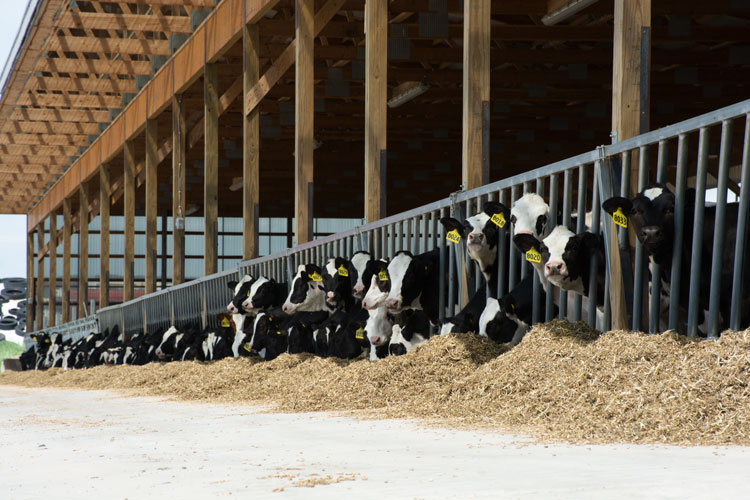
If lower milk prices are the new normal, then it’s time to find ways to evaluate each dollar spent on feed. That was the focus of a recent presentation by Mike Hutjens at the Four-State Dairy Nutrition and Management Conference.
He offered six areas of evaluation for optimizing feeding efficiencies and production based on rations.
1. Build your milk check. The biggest opportunity available in Hutjens’ mind lies in capturing more value for the milk that is produced by improving component production. He explained that top herds produce more than 7 pounds of combined fat and protein per day and recommended that everyone achieve at least the 6.1-pound benchmark.
2. Capture marginal dry matter intake. For every additional pound of dry matter consumed per cow, farms can achieve an additional 2 pounds of milk per cow per day.
3. Make every additive work for you. Hutjens reminded producers to evaluate the importance of each additive they use. His list of additives in order of importance were monensin, silage inoculants, organic trace minerals, yeast and yeast cultures, sodium bicarbonate, and biotin.
4. Focus on your heifer enterprise. “Heifers are not a profit center,” observed Hutjens. He recommended evaluating how many heifers are raised and how quickly they are achieving lactation.
5. Optimize forage quality. “That’s going to be a tough one this year,” admitted Hutjens. “But one unit of change in fiber digestibility equals 0.26 pounds of dry matter intake.” He further gave advice on feeding the lower quality forages that were harvested this spring. “Meter them in carefully with higher quality forages and use by-products. I would dilute them out the best I could,” he explained.
6. Use the forage tools in your toolbox. “If you have low-quality forages, chop the hell out of them,” he reiterated. Also, he reminded producers to be especially cognizant of kernel processing this year.








